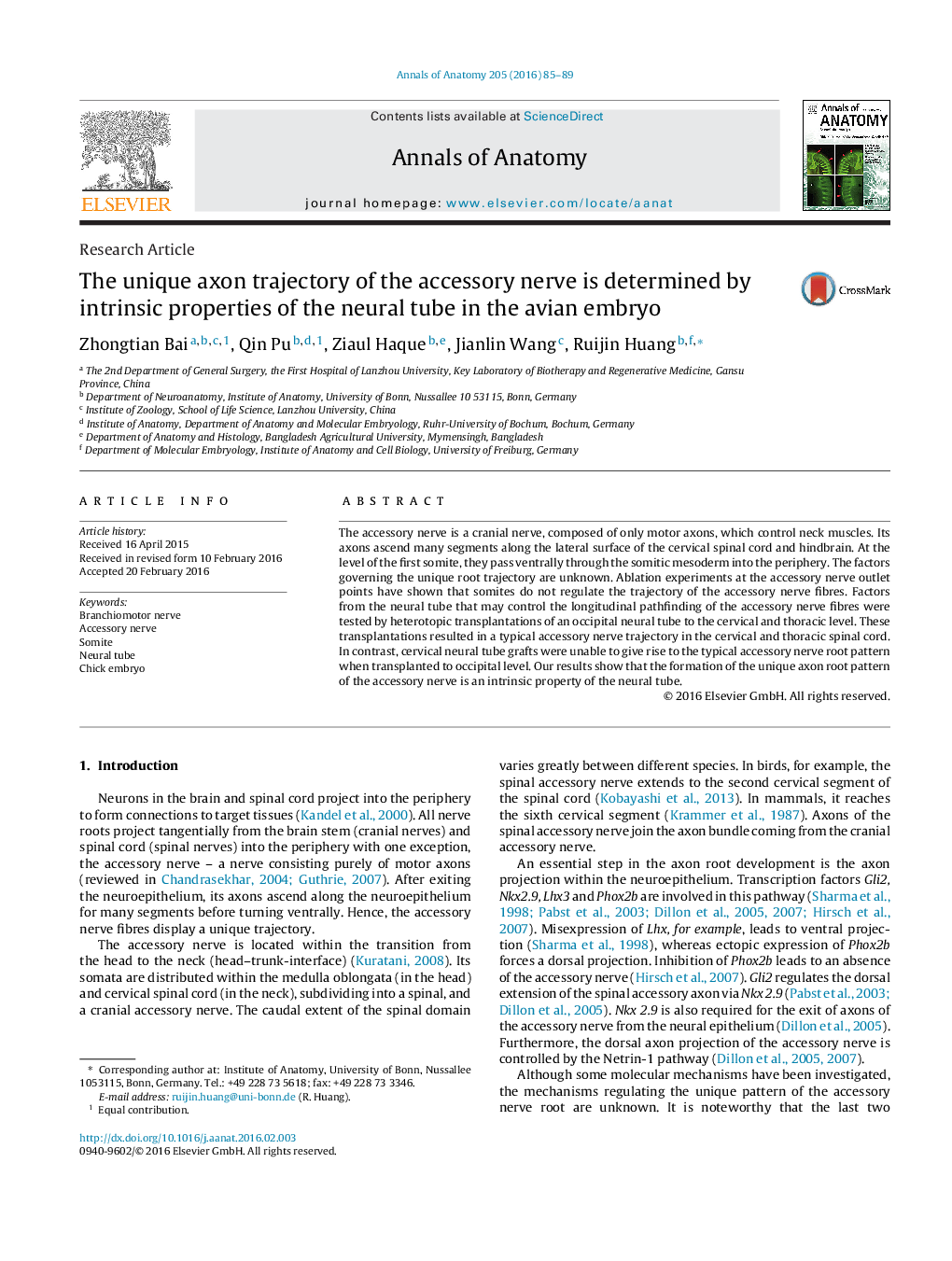| Article ID | Journal | Published Year | Pages | File Type |
|---|---|---|---|---|
| 8460838 | Annals of Anatomy - Anatomischer Anzeiger | 2016 | 5 Pages |
Abstract
The accessory nerve is a cranial nerve, composed of only motor axons, which control neck muscles. Its axons ascend many segments along the lateral surface of the cervical spinal cord and hindbrain. At the level of the first somite, they pass ventrally through the somitic mesoderm into the periphery. The factors governing the unique root trajectory are unknown. Ablation experiments at the accessory nerve outlet points have shown that somites do not regulate the trajectory of the accessory nerve fibres. Factors from the neural tube that may control the longitudinal pathfinding of the accessory nerve fibres were tested by heterotopic transplantations of an occipital neural tube to the cervical and thoracic level. These transplantations resulted in a typical accessory nerve trajectory in the cervical and thoracic spinal cord. In contrast, cervical neural tube grafts were unable to give rise to the typical accessory nerve root pattern when transplanted to occipital level. Our results show that the formation of the unique axon root pattern of the accessory nerve is an intrinsic property of the neural tube.
Related Topics
Life Sciences
Biochemistry, Genetics and Molecular Biology
Cell Biology
Authors
Zhongtian Bai, Qin Pu, Ziaul Haque, Jianlin Wang, Ruijin Huang,
